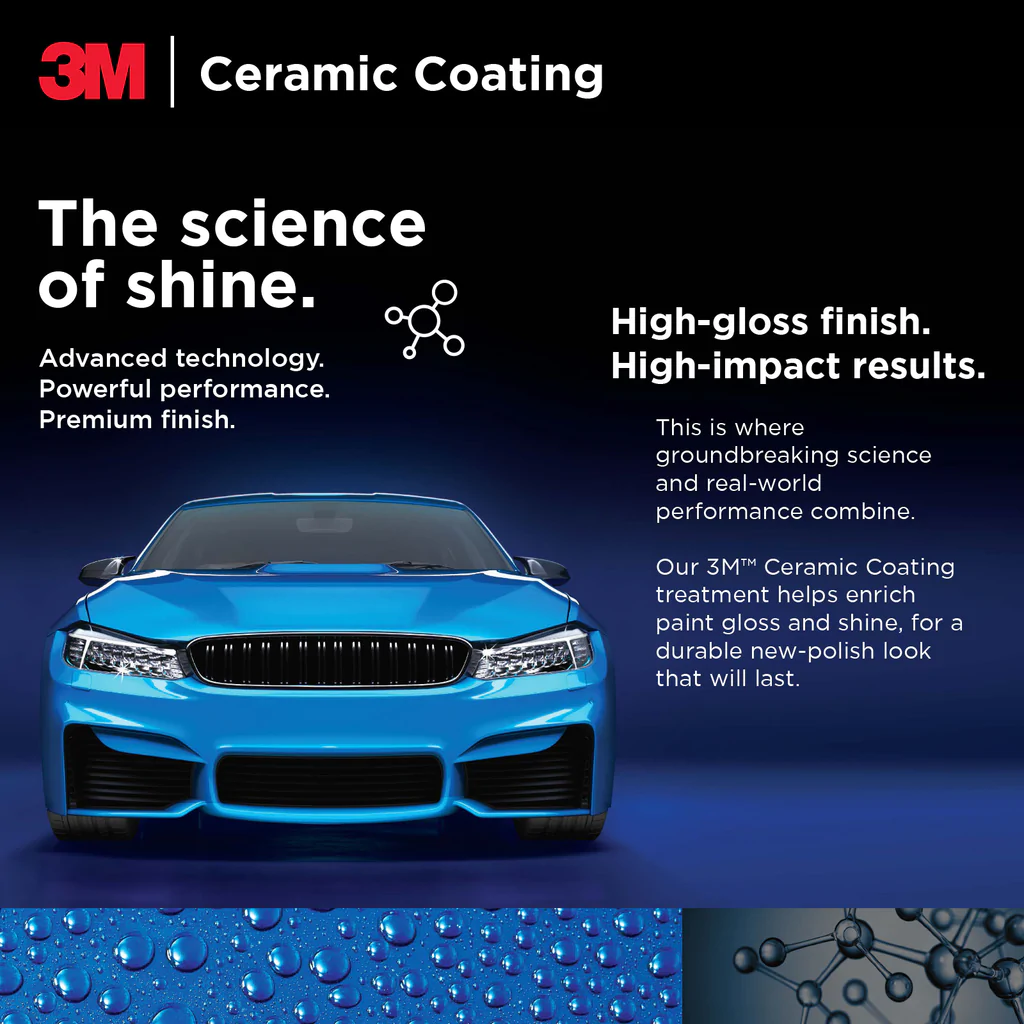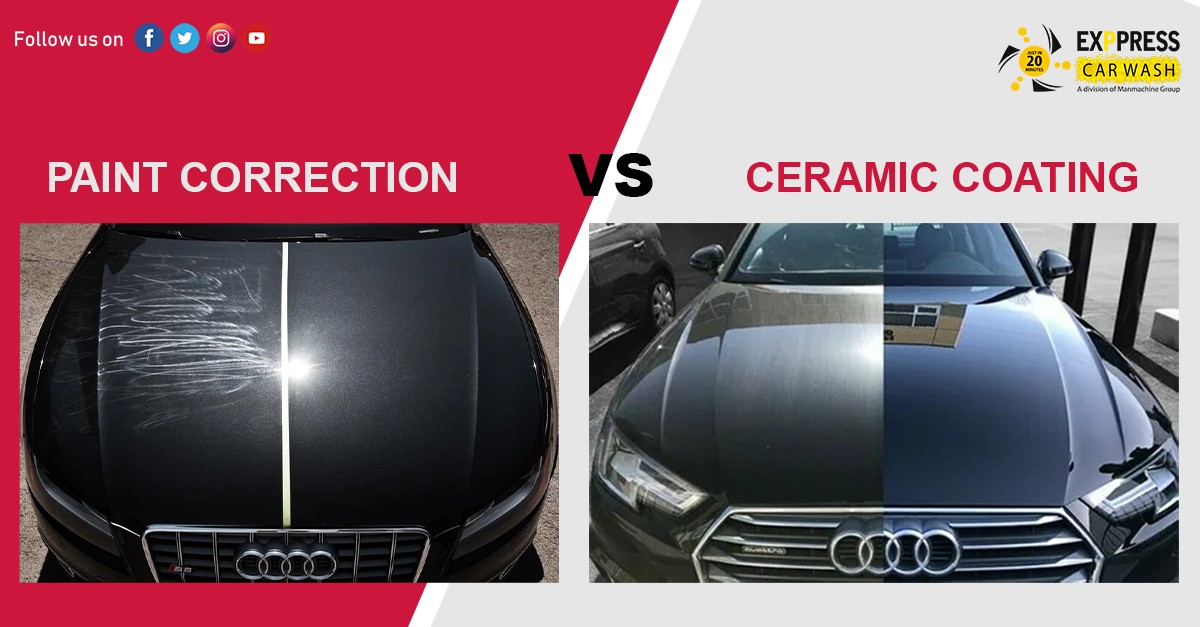The Role of Ceramic Coating in Securing Your Cars and truck's Paint From Environmental Damages
Ceramic covering has emerged as an advanced remedy for cars and truck proprietors looking for to protect the integrity of their car's exterior. As we check out the nuances of ceramic finishing, it becomes evident that the option to implement this protective measure can considerably affect your automobile's durability and aesthetic.
What Is Ceramic Covering?
Ceramic covering is an innovative fluid polymer related to the exterior surfaces of a car, designed to offer a resilient layer of security for the paint. This cutting-edge solution forms a chemical bond with the lorry's factory paint, producing a hydrophobic and resistant guard. The covering contains nanoparticles that complete the tiny imperfections in the paint, leading to a smooth surface that improves gloss and shine.
Generally, ceramic coatings are available in various formulations, allowing for various degrees of security and long life. While some items can last for a number of months, others provide security for several years, depending upon the density of the application and ecological factors. The application procedure calls for thorough preparation, consisting of cleaning, decontaminating, and polishing the car's surface area to guarantee optimum adhesion of the finish.

Benefits of Ceramic Finishing
Among the main advantages of using a ceramic layer is the outstanding protection it supplies to automobile paint. This advanced coating forms a resilient layer that guards the vehicle's surface from a range of ecological threats, consisting of UV rays, acid rainfall, bird droppings, and tree sap. By giving this durable defense, ceramic coverings substantially reduce the danger of fading and etching, maintaining the vehicle's aesthetic charm with time.
In enhancement to protection, ceramic layers are renowned for their hydrophobic buildings, which ward off water and dirt, making it simpler to maintain a tidy automobile. This self-cleaning impact decreases the frequency of cleaning, saving both time and resources. Ceramic coverings boost the depth of the paint's gloss, resulting in a dynamic and polished look that elevates the overall appearance of the vehicle.
Another significant benefit is the durability of ceramic coatings. Unlike standard waxes or sealants that need frequent reapplication, ceramic coatings can last numerous years, using a cost-effective option for cars and truck owners looking for long-lasting security. In general, purchasing ceramic covering brings about improved toughness, lowered maintenance, and sustained visual allure for auto paint.
Exactly How Ceramic Finish Works
A ceramic finish operates with a chemical bonding procedure that develops a protective layer on the vehicle's paint surface. This cutting-edge service utilizes sophisticated nanotechnology, where microscopic fragments of silica are put on hold in a liquid type - ceramic coating. Upon application, these particles bond with the manufacturing facility paint, forming a durable and hydrophobic layer that boosts the automobile's surface
The major element of ceramic finishes, silicon dioxide (SiO2), adds to the finish's toughness and durability. When healed, the coating changes into a hard, glass-like coating that guards the paint from environmental impurities such as dust, UV rays, bird droppings, and tree sap. This molecular bond results in a surface area that is not only immune to scrapes but additionally simpler to clean, as dirt and gunk are much less most likely to stick.
In addition, the hydrophobic homes of ceramic finishes trigger water to bead and slide off, decreasing the opportunities of water areas and mineral deposits. This safety barrier effectively prolongs the life of the paint and keeps the vehicle's aesthetic charm, using cars and truck owners a resilient solution for paint defense.
Application Refine of Ceramic Covering
When considering the application of ceramic layer, prep work is essential to achieving ideal outcomes. Any kind of imperfections or scratches must be attended to at this stage, as the coating will bond with the surface underneath.

Ceramic coating is then used in small areas, normally utilizing an applicator pad. It is crucial to operate in also strokes, making sure uniform protection. The layer should be allowed to cure for a specified time, which can vary relying on the product made use of. After the preliminary application, a top notch microfiber towel is used to rub the surface area, improving gloss and ensuring a smooth coating. Finally, the car needs to be left to heal in a regulated environment to permit the finishing to totally bond with the paint.
Long-Term Upkeep and Care
Attaining a successful ceramic finishing application establishes the foundation for lasting protection, yet proper maintenance is important to preserving its advantages. Regular cleaning is important; using a pH-neutral automobile hair shampoo will help preserve the coating's stability without triggering damages. Prevent automated auto washes that use rough materials, as they can compromise More Bonuses the finish's surface.

Additionally, using a ceramic covering maintenance spray can improve the existing layer, providing an extra boost in security and sparkle. It's a good idea to execute this every three to six months, relying on environmental exposure.
Lastly, vehicle parking in shaded areas or making use of cars and truck covers can avoid extended direct exposure to unsafe UV rays and environmental pollutants, further extending the life of your ceramic layer. By adhering to these upkeep practices, you can guarantee your lorry's surface remains protected and visually appealing for years ahead.
Conclusion
In summary, ceramic covering functions as an essential safety action for automotive paint, successfully protecting automobiles from an array of environmental risks. Its capacity to develop a durable hydrophobic obstacle not only improves visual allure however additionally dramatically decreases the regularity and intensity of maintenance needed. The durable nature of this innovative polymer underscores its worth in protecting automobile integrity and appearance, ultimately contributing to an extra aesthetically appealing and resilient vehicle finish.
Ceramic layer is a sophisticated liquid polymer used to the external surfaces of a car, created to supply a sturdy layer of protection for the paint. Ceramic this page layers boost the deepness of the paint's gloss, resulting in a dynamic and polished look that boosts the general appearance of the automobile.
A ceramic finishing operates with a chemical bonding procedure that produces a safety layer on the automobile's paint surface area.The main element of ceramic coverings, silicon dioxide (SiO2), contributes to the finish's strength and strength.In summary, ceramic finish offers as a crucial protective step for vehicle paint, effectively securing automobiles from an array of ecological risks.